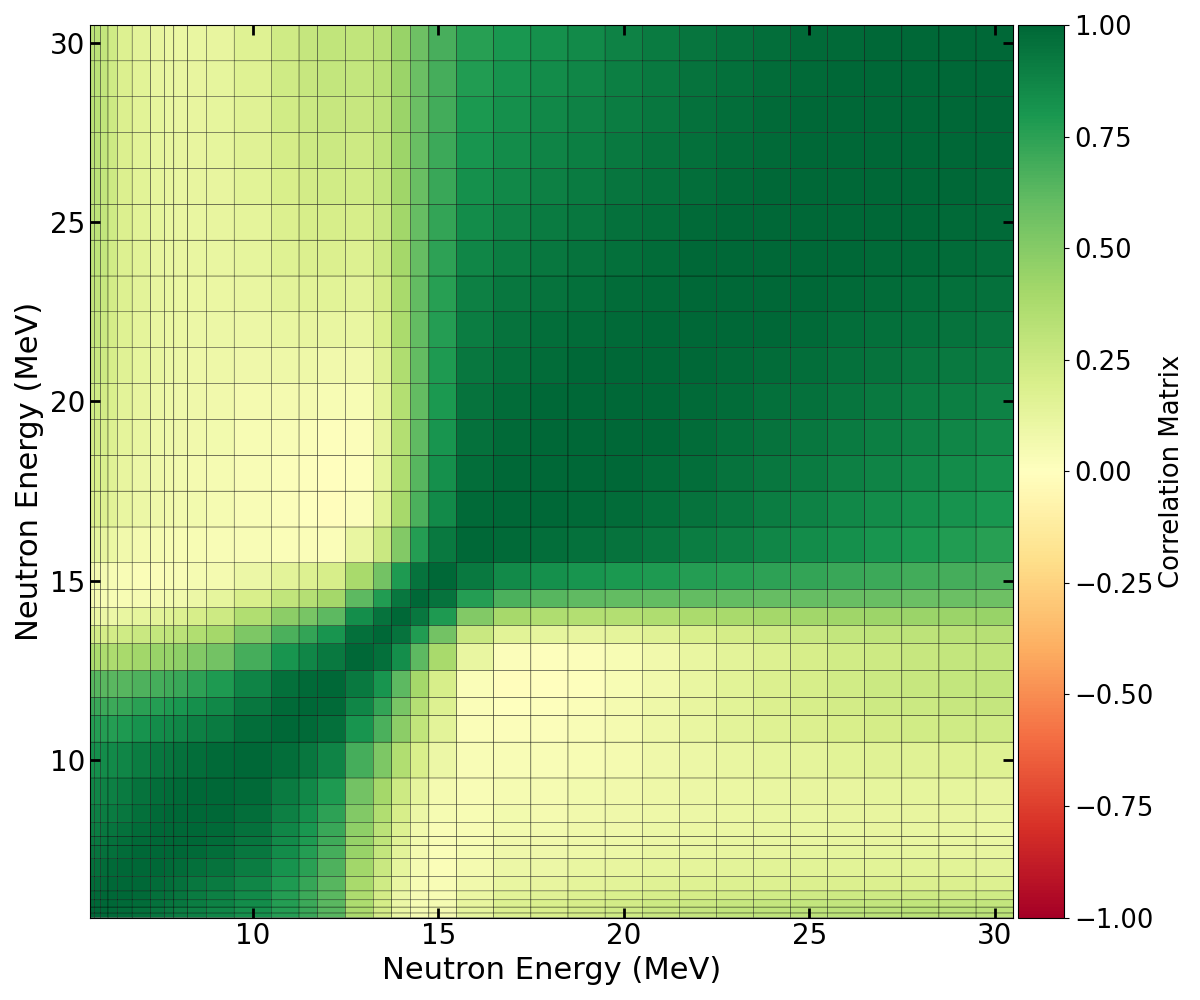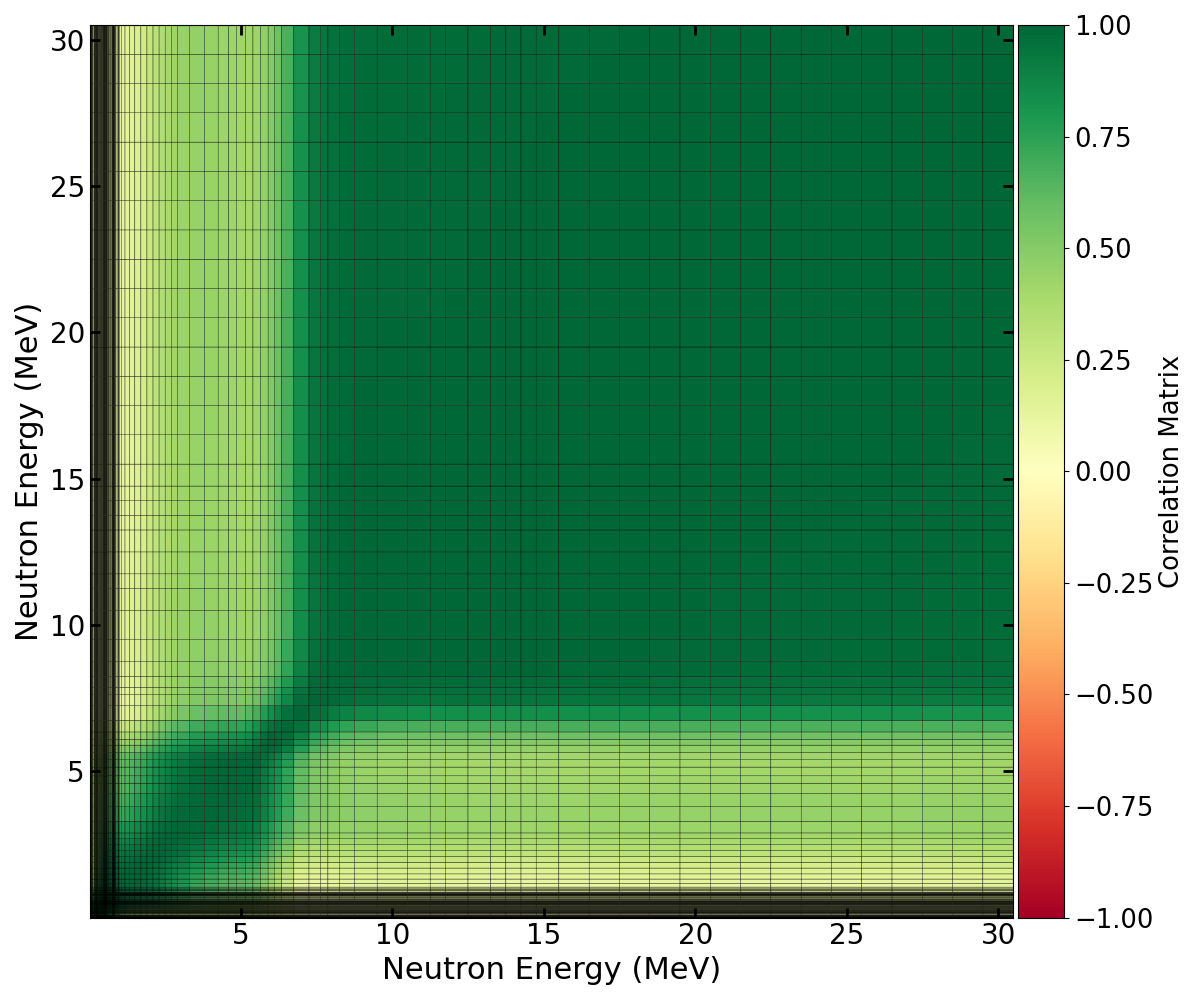Covariances for the LANL $^{239}$Pu cross section evaluation

LA-UR-22-31089
Matthew Mumpower
on behalf of the LANL team

Nuclear Data Team

Los Alamos National Laboratory Caveat
The submitted materials have been authored by an employee or employees of Triad National Security, LLC (Triad) under contract with the U.S. Department of Energy/National Nuclear Security Administration (DOE/NNSA).
Accordingly, the U.S. Government retains an irrevocable, nonexclusive, royaltyfree license to publish, translate, reproduce, use, or dispose of the published form of the work and to authorize others to do the same for U.S. Government purposes.
Methodology
We are in the process of updating the $^{239}$Pu cross sections in the fast energy range
(complementing the work of IAEA / INDEN / ORNL / LLNL)
Covariances constructed with NEXUS KALMAN code
Method: Combine model variation with experimental uncertainties
Bayesian inference used to estimate covariances
Posterior covariances for parameters take the form:
$\pmb{P} = (\pmb{X}^{-1} + \pmb{C}^{T} \pmb{V}^{-1} \pmb{C}) ^{-1}$
And the final covariance matrix (function of energy) is:
$\pmb{F} = \pmb{C} \pmb{P} \pmb{C}^{T}$
Where:
$\pmb{X}$ = prior model parameter cov. matrix, $\pmb{V}$ = experimental data cov. matrix, $\pmb{C}$ = model sensitivity matrix
Total cross section

Model: Soukhovitskii (2005) optical model [deformation ~0.21]
Uncertainties generated from variation of 7 optical model parameters and 25+ experimental datasets
Total: energy correlation matrix

Generally positive correlation as a function of energy
Assume the off-diagonal elements of the experimental covariance matrix are relatively correlated (0.3)
Total: relative uncertainty

LANL result is consistently higher than ENDF/B-VIII.0
Reason for differences are under analysis
Capture cross section

Model: CoH statistical Hauser Feshbach with M1 of Mumpower et al. PRC 96 024612 (2017)
Uncertainties generated from 20+ model parameters and 10+ experimental datasets
Capture: energy correlation matrix

Diagonal or near diagonal positive correlation; off-diagonal negative as a function of energy
Assume the off-diagonal elements of the experimental covariance matrix are relatively correlated (0.3)
Capture: relative uncertainty

LANL result is consistently higher at higher energies than ENDF/B-VIII.0
New Mosby (2018) data is most impactful to new uncertainties
(n,2n) cross section

Model: CoH with new collective enhancement of Mumpower et al. submitted PRC (2022)
Uncertainties generated from variation of 20+ model parameters and 4 experimental datasets
(n,2n): energy correlation matrix

Generally positive correlation as a function of energy
Assume the off-diagonal elements of the experimental covariance matrix are relatively correlated (0.3)
(n,2n): relative uncertainty

LANL result is consistently similar order as ENDF/B-VIII.0
Differences arises from new collective enhancement and Méot et al. PRC 103 054609 (2021) data near threshold
(n,inel) cross section

Model: CoH statistical model
Uncertainties generated from variation of 20+ model parameters and 1 experimental dataset
(n,inel): energy correlation matrix

Generally positive correlation as a function of energy
Assume the off-diagonal elements of the experimental covariance matrix are relatively correlated (0.3)
(n,inel): relative uncertainty

LANL result is consistently similar order as ENDF/B-VIII.0
Cross section near threshold is very uncertain and model dependent
Special thanks to our colleagues
Roberto Capote, Mark Chadwick, Matt Devlin, Nathan Gibson, Wim Haeck, Mike Herman, Toshihiko Kawano, Keegan Kelly, Noah Kleedtke, Amy Lovell, Paola Marini, Denise Neudecker, Vladimir Pronyaev, Hiro Sasaki, Luke Snyder, Ionel Stetcu, Julien Taieb, Patrick Talou, Andrej Trkov
We gratefully acknowledge the support of the Advanced Simulation and Computing (ASC) program at Los Alamos National Laboratory.